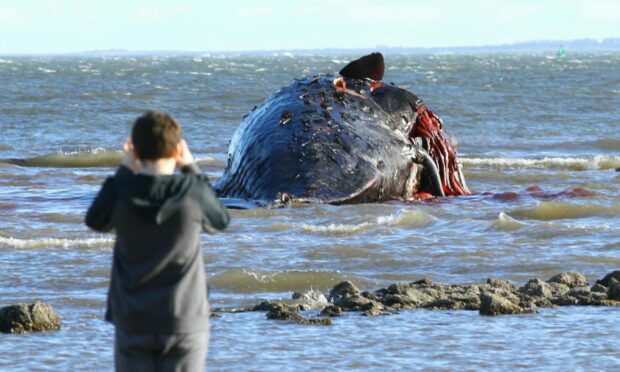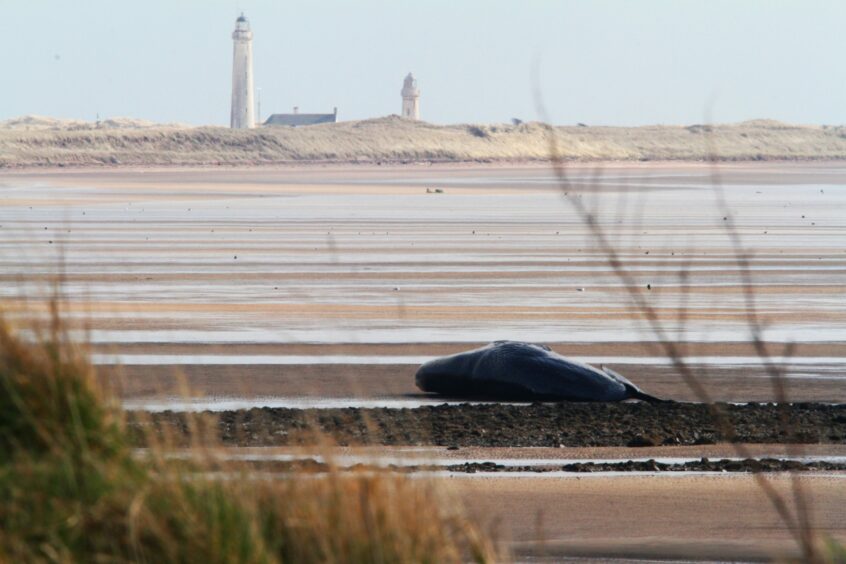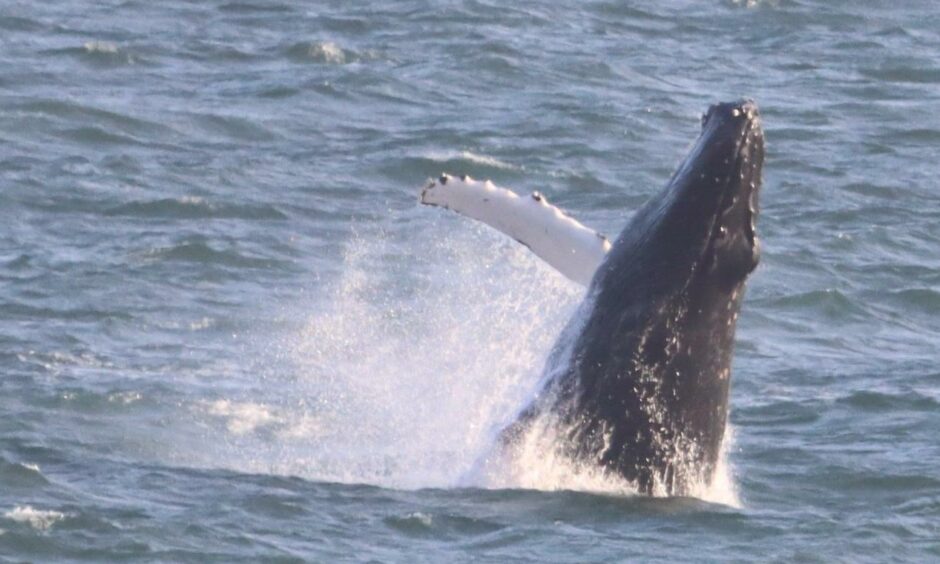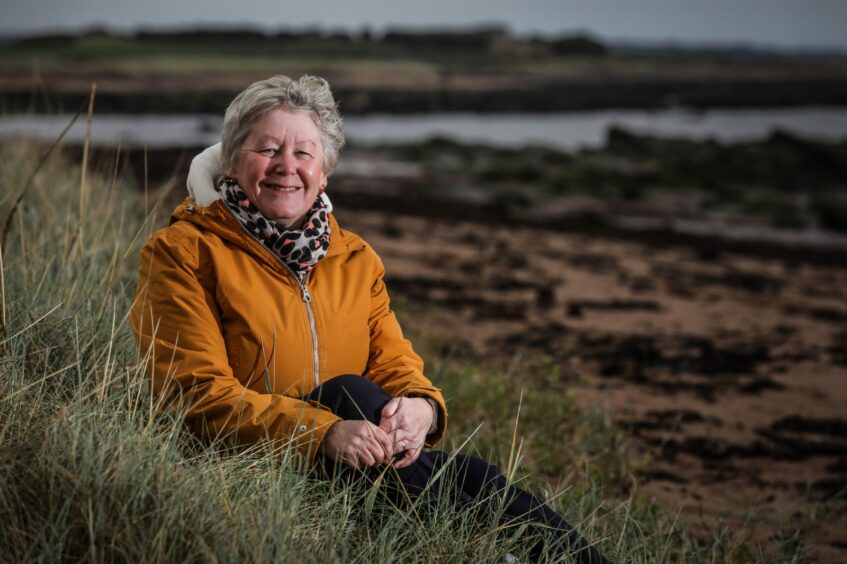Leaving whale carcasses to decompose on the Fife and Angus coastlines could boost the ecosystem, a study has suggested.
The remains of stranded marine animals provide food for scavengers, say researchers.
But a contributor to the paper says there is no suggestion that public health be put at risk by animals which could carry disease – or even explode – being left on busy beaches.
Dr Andrew Brownlow is a marine pathologist from the Scottish Marine Animal Strandings Scheme.
“Look at YouTube and there’s always a sperm whale that explodes on the back of a lorry.
“Yes, gasses scan build up and it is possible that these animals, especially sperm whales, can explode.
“Are we suggesting that dangerous cetaceans at a risk of exploding should be left on a public amenity beach for children to play around them? Of course we’re not doing that.”
What is the study calling for?
Stirling University academics collaborated with scientists at Granada University in Spain for the study.
They looked at the issue on a global scale, not just within the UK.
They recommend considering alternatives to taking cetacean carcasses away for disposal.
This could involve moving the carcass to a more remote beach, closing a section of the beach for a short time or cutting the carcass up to speed up decomposition.
Crabs, seabirds and even polar bears could benefit from this, they say.
And it is an issue local authorities closer to home may have to deal with on a more frequent basis as whale populations increase.
Dr Brownlow says since a whaling ban halted the slaughter of these “magnificent creatures” in the mid-1980s, populations had started to bounce back.
As a result, we are seeing more unusual whale sightings, such as sei whales, off the Fife coast.
More whales are a good news story
“The populations of these really big whales are seeming to recover, particularly in the Firth of Forth,” says Dr Brownlow.
“We’re seeing populations that we haven’t seen in our recent memory.
“In a lot of cases it’s because the populations are recovering, which is a good news story.”
What happens to whale carcasses in Scotland is up to individual local authorities.
Fife’s 140-mile long coast means that whale carcasses can sometimes turn up in isolated spots where they are not a risk to the public.
If they pose a risk to the public, they are moved.
A 37ft long sei whale that stranded near North Queensferry last year was sent to landfill for this reason.
Compared to land-based animals, marine animals carry fewer diseases that humans can catch.
But there is still a risk.
“You don’t need to be a bacteriologist or a scientist to work out that if you’ve got tonnes of decomposing whale blubber on the beach, then that’s not pleasant.
“You probably don’t want to leave it there. There are some pathogens that they can carry, which you probably wouldn’t want to get exposed to.”
What is the risk and what is the cost of moving it?
Robbie Blyth is head of operations at Fife Coast and Countryside Trust (FCCT).
He says what happens after a stranding depends on the risk the carcass poses and the cost involved in moving it.
“Last year we had to remove a sei whale from the Firth of Forth as it would have presented a risk if left within a busy shipping lane and it would have been very problematic to leave it within an urban location.
“At FCCT we support the comments from Stirling University that recommend the revaluating of practices. But recognise this would require greater resources and possibly a change in legislation.
“Though we are happy to work with all stakeholders towards a more sustainable process.”
Sperm whale buried at Angus coast
In March 2018 a 45ft sperm whale washed up at Barry Buddon near Monifieth.
It was buried in the sand at the beach.
A spokesperson for Angus Council said the authority had no formal policy in place regarding how to respond to stranded whales on Angus beaches.
The authority considers these “relatively rare” events on a case by case basis.
“The action taken when there have been recent strandings of dead whales has been to bury the dead animal on the beach above the high tide line.”
Local volunteer Wendy Murray of East Haven Together organises regular beach cleans at the shoreline near Carnoustie.
“I would expect larger mammals like whales to be picked up. I think they would pose a disease risk and a safety risk.
“I’d say there would be concerns for animals, for dogs, and children getting too close to it.”












